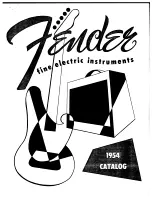
Appendix B: Battery and Power Management
Appendix B: Battery and Power Management
LPX’s power source is an on-board, rechargeable, Lithium Ion (Li-Ion) 7.2V battery. LPX can
tune itself up to 500 times on a single charge, and recharges in about 70 minutes.
Note
:
Because this battery is a precision device, please follow these instructions carefully on
charging, storage, and optimizing performance.
Optimizing Battery Life
Proper care extends the battery’s life, keeps it operating at optimum efficiency, and
preserves the highest possible storage capacity. Please observe the following.
Charge the battery fully before using LPX.
Even if LPX seems charged upon arrival,
that was done for testing at the factory. Initially charge LPX for at least an hour.
Caution!
Do not use any charger other than the one supplied with LPX.
Li-Ion
batteries require specific charge rates.
Avoid full discharges that drain the battery completely.
Li-Ion batteries like to be
discharged somewhat, then recharged back to full capacity. LPX provides a good
environment for Li-Ion batteries, as you’ll typically discharge it about halfway during
the length of a concert. Charging the battery back to full charge after playing
provides optimum battery life.
Avoid elevated temperatures.
You don’t want to expose
any
guitar to high
temperatures, but this also shortens battery life dramatically.
Store the battery properly.
If you won’t be playing LPX for several weeks or more,
discharge the battery partway (about 40-50% of its full charge), remove the battery,
and store it in a cool, but not cold, place.
Do not store the battery either fully
charged or fully discharged.
Either one can shorten battery life considerably.
After taking a battery out of storage, charge it fully before playing LPX.
This
promotes longer battery life.
Once the battery is fully charged, disconnect the charger.
Li-Ion batteries are
“smart” and you can’t really overcharge them. However, leaving them connected to
a charger when fully charged uses power unnecessarily.
These tips don’t necessarily apply to laptop computers.
Even if a laptop uses an Li-
Ion battery, there are computer-specific considerations. Follow the computer
manufacturer’s instructions for proper laptop battery care.
About Charge/Discharge Cycles
An Li-Ion battery is typically rated for 300-500
charge/discharge cycles.
In other words, you
can discharge the battery at least 300 times and charge it back up again before its useful
life is over.
If you play LPX and discharge it 50% during a concert, then charge it to full capacity, that is
Page
36
































